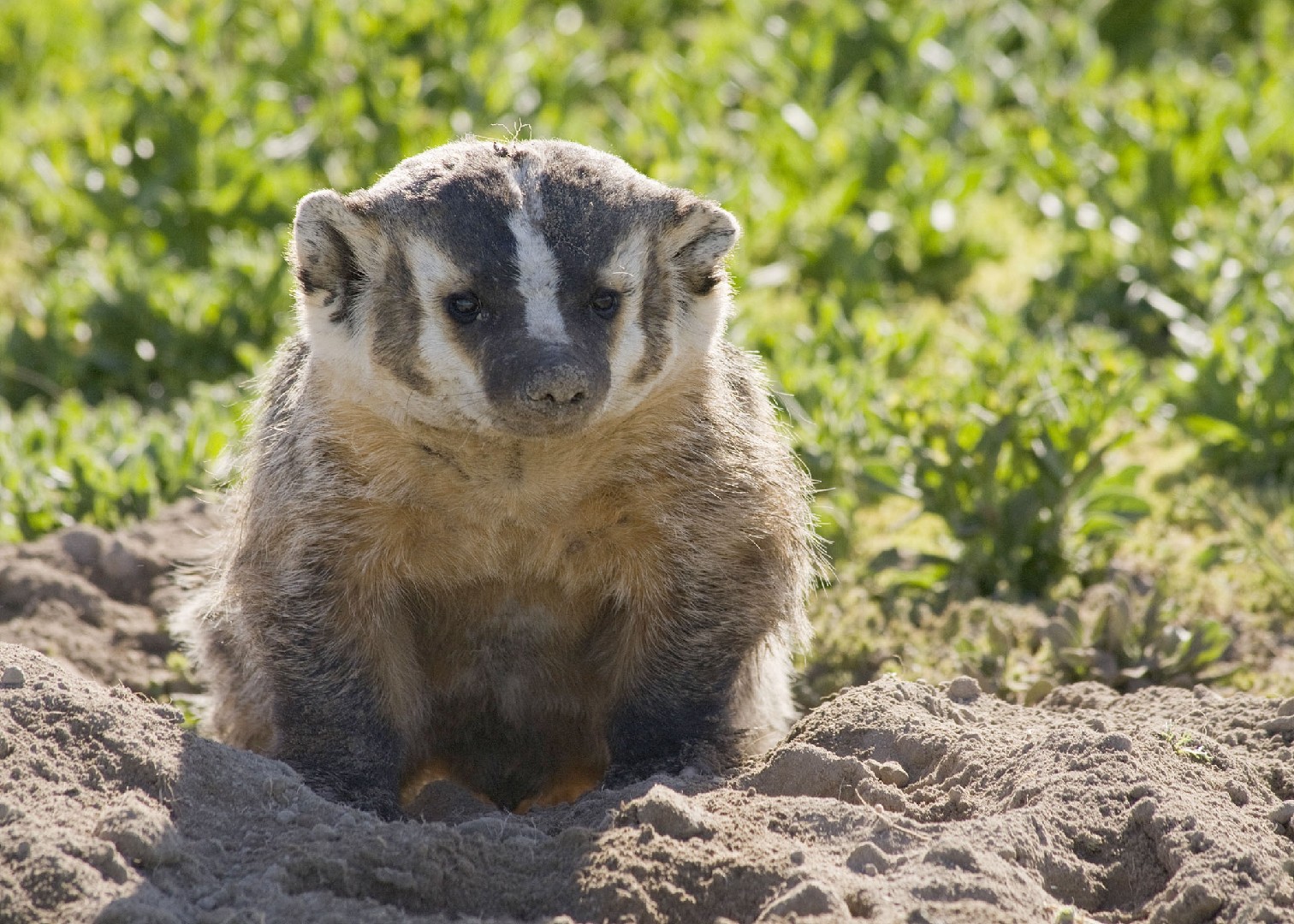American badger
A species of Badger Scientific name : Taxidea taxus Genus : Badger
American badger, A species of Badger
Scientific name: Taxidea taxus
Genus: Badger
Content
Description General Info
 Photo By Oregon Department of Fish and Wildlife , used under CC-BY-SA-2.0 /Cropped and compressed from original
Photo By Oregon Department of Fish and Wildlife , used under CC-BY-SA-2.0 /Cropped and compressed from original Description
The American badger has most of the general characteristics common to badgers; with stocky and low-slung bodies with short, powerful legs, they are identifiable by their huge foreclaws (measuring up to 5 cm in length) and distinctive head markings. Measuring generally between 60 and 75 cm (23.5 and 29.5 in) in length, males of the species are slightly larger than females. They may attain an average weight of roughly 6.3 to 7.2 kg (14 to 16 lb) for females and up to 8.6 kg (19 lb) for males. Northern subspecies such as T. t. jeffersonii are heavier than the southern subspecies. In the fall, when food is plentiful, adult male badgers can reach up to 11.5 to 15 kg (25 to 33 lb). In some northern populations, females can average 9.5 kg (21 lb). Except for the head, the American badger is covered with a grizzled, brown, black and white coat of coarse hair or fur, giving almost a mixed brown-tan appearance. The coat aids in camouflage in grassland habitat. Its triangular face shows a distinctive black and white pattern, with brown or blackish "badges" marking the cheeks and a white stripe extending from the nose to the base of the head. In the subspecies T. t. berlandieri, the white head stripe extends the full length of the body, to the base of the tail. 
General Info
Lifespan
4-9 years
Diet
American badger is primarily a carnivorous species, feeding mainly on small mammals like rodents and rabbits. Its diet also includes insects, birds, eggs, and occasionally plant matter, illustrating its opportunistic foraging nature.
Appearance
American badger is a medium-sized mammal with a robust body and a thick, coarse fur that ranges from grayish to brownish, with a dark stripe running from the forehead to the rump. It has small ears and eyes, a pointed snout, and a rather short, bushy tail. Strong forelimbs with long, powerful claws are characteristic, adapted for its burrowing lifestyle. Both sexes share similar characteristics, with no significant variations due to age or subspecies.
Behavior
American badger is predominantly nocturnal and solitary, exhibiting robust digging abilities for burrow construction and prey foraging. Its survival is aided by hibernation, adipose storage during seasonal abundance, and scent-marking for territory. Known for its distinctive ferocity when threatened, american badger will confront intruders vehemently, using its robust claws.
Population
Decreasing

 Photo By Oregon Department of Fish and Wildlife , used under CC-BY-SA-2.0 /Cropped and compressed from original
Photo By Oregon Department of Fish and Wildlife , used under CC-BY-SA-2.0 /Cropped and compressed from original Scientific Classification
Phylum
Chordates Class
Mammals Order
Carnivores Family
Mustelids Genus
Badger Species
American badger